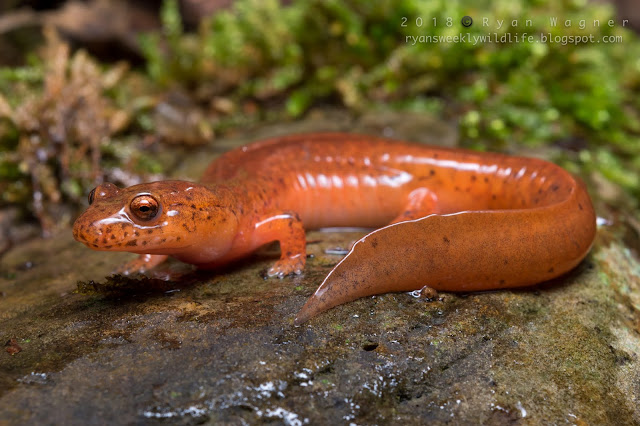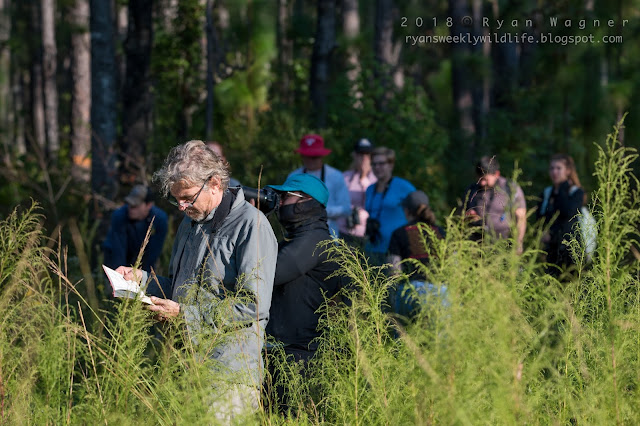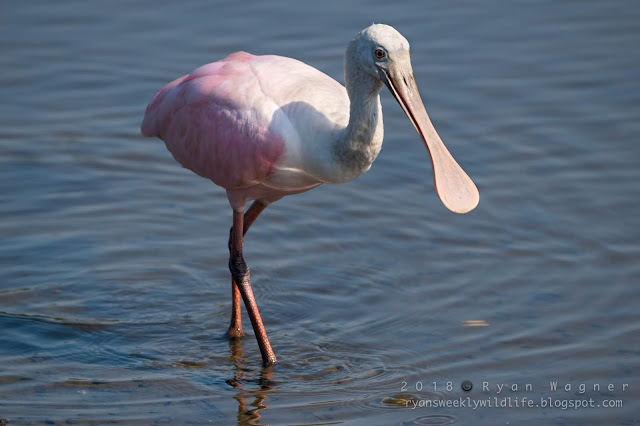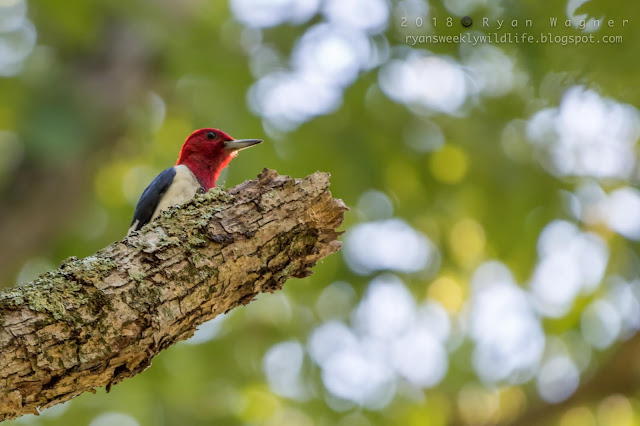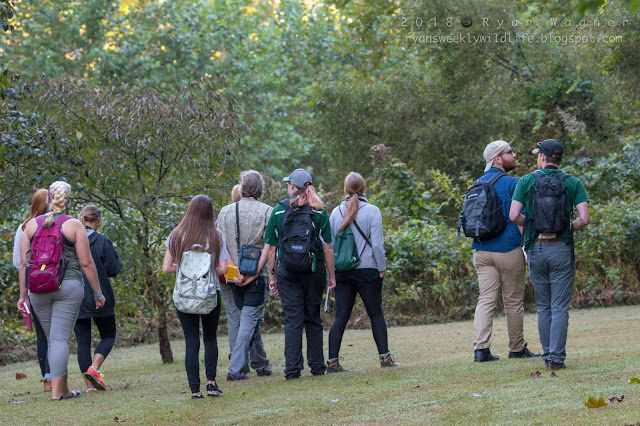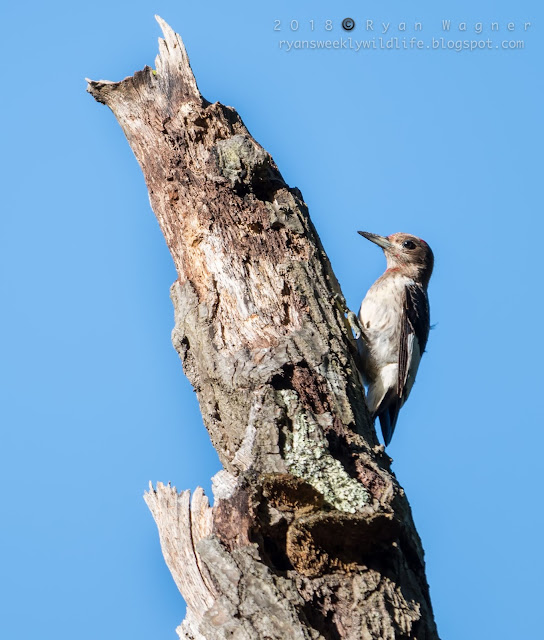Part one here.
As I dropped the flattened stone I had been lifting back into place, Carl called out, “I’ve got one!” Looking up the creek, I saw Carl hunched over, a large stone slab balanced against his leg and arm. Our hike was beginning to push the five hour marker, and we hadn't found so much as a red-backed salamander as a consolation prize. My back and arms ached from the countless rocks I had lifted. I had been nearly ready to give up; the day was just too warm and dry for amphibian activity. Kentucky spring salamanders (Gyrinophilus porphyriticus duryi) might be common in cooler, wetter conditions, but today was clearly not favorable. We'd missed our best chance to find one, I had thought. Call it pure luck or persistence, but our searching finally payed off.
As I dropped the flattened stone I had been lifting back into place, Carl called out, “I’ve got one!” Looking up the creek, I saw Carl hunched over, a large stone slab balanced against his leg and arm. Our hike was beginning to push the five hour marker, and we hadn't found so much as a red-backed salamander as a consolation prize. My back and arms ached from the countless rocks I had lifted. I had been nearly ready to give up; the day was just too warm and dry for amphibian activity. Kentucky spring salamanders (Gyrinophilus porphyriticus duryi) might be common in cooler, wetter conditions, but today was clearly not favorable. We'd missed our best chance to find one, I had thought. Call it pure luck or persistence, but our searching finally payed off.
In the shallow depression where the stone had perviously lain, an underground spring trickled into a small, murky pool. Just below the surface, sat the orange silhouette of a large salamander. With Carl pinned against the rock, it was up to me to make the catch. I moved deliberately, trying not to disturb the pool and scare the salamander back underground. My hands shook from a mix adrenaline and exhaustion as I tried to cut off the salamanders exit. It was an awkward fit, but I was able to wedge the end of my dip net below the pock-marked rock and the uneven, gravel riverbed. If I could just get ahold of the salamander’s plump body, I’d be able to usher it into the net. I plunged one hand into the water. For a split second, I felt the slimy body of the salamander slide through my fingers. Then it was gone.
It’s fair to say I was aghast. As I looked up in horror, Carl chuckled. “That’s the way it goes sometimes with springs,” he said. Our near success prompted another hour long search before we finally gave up. That orange silhouette has haunted me ever since. I can’t count the number of times I’ve played the scenario over in my head, imagining what I would do differently if I could have another chance.
That was late spring 2018. The dry, warm weather had pushed most of the Kentucky springs below ground. All except for that fateful individual. I would have to wait for fall before the pinkish-orange amphibians ventured back up to the surface. Carl and I spent the summer hiking, searching for everything from rattlesnakes to racers, that one, lone Kentucky spring in the back of my mind all the while.
That was late spring 2018. The dry, warm weather had pushed most of the Kentucky springs below ground. All except for that fateful individual. I would have to wait for fall before the pinkish-orange amphibians ventured back up to the surface. Carl and I spent the summer hiking, searching for everything from rattlesnakes to racers, that one, lone Kentucky spring in the back of my mind all the while.
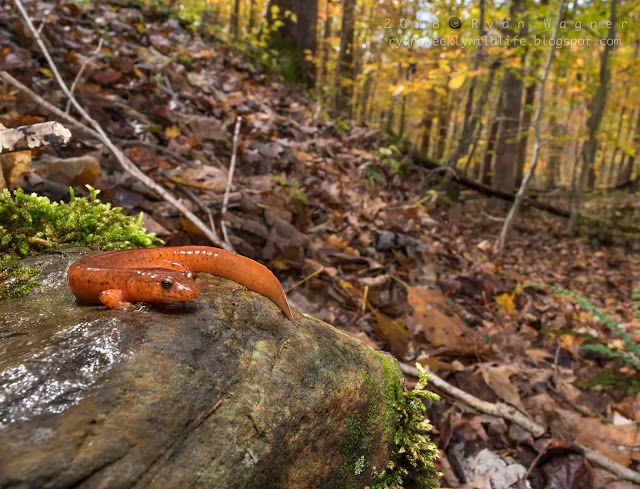 The Kentucky spring's cousin, the northern spring salamander (G.p. porphyriticus), is scattered across the eastern and southern portions of Ohio. The Kentucky (G.p. duryi) is located in just a few counties in south-central Ohio (as well as western West Virginia and northeastern Kentucky). The differences between the two subspecies are subtle. The Kentucky is usually smaller with different body proportions and is more brightly colored compare to the northern race. Populations of the two subspecies do not appear to overlap, although there is some integration in southeastern Ohio.
The Kentucky spring's cousin, the northern spring salamander (G.p. porphyriticus), is scattered across the eastern and southern portions of Ohio. The Kentucky (G.p. duryi) is located in just a few counties in south-central Ohio (as well as western West Virginia and northeastern Kentucky). The differences between the two subspecies are subtle. The Kentucky is usually smaller with different body proportions and is more brightly colored compare to the northern race. Populations of the two subspecies do not appear to overlap, although there is some integration in southeastern Ohio.  |
| Western Chorus Frog. |
 |
| Small-mouthed Salamander. |
Within the first five minutes of searching, Carl called out, “I’ve got one.” I couldn't have crafted a better rematch scenario myself. This time, there was no spring or crevice for the salamander to escape into. Carl held the rock as I knelt down and plucked the spring salamander from the substrate. It squirmed and struggled, but this time I had it. The grin on my face stretched from ear to ear.
Had it not been for that initial find, we likely would have concluded this trip as laborious and unfruitful as the first. For the next three hours we didn't find another salamander. We flipped good rock after good rock, only to stare in bewilderment at empty pockets of sediment—the perfect size and shape for a hiding salamander. Finally we decided to call it quits. Just before turning around, Carl flipped one more rock. A juvenile spring with a regenerating tail sat below, the smallest spring Carl had ever seen. After all our hard work, we were both relieved to have found another individual. These salamanders are clearly still abundant, but under suboptimal conditions they can be very troublesome to find.
Thanks for reading.
Keep living the field life.
RBW
